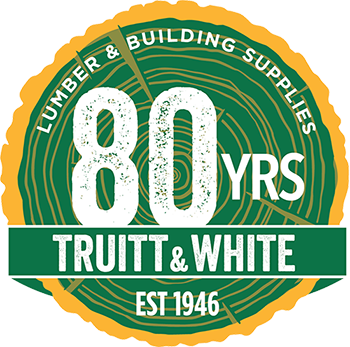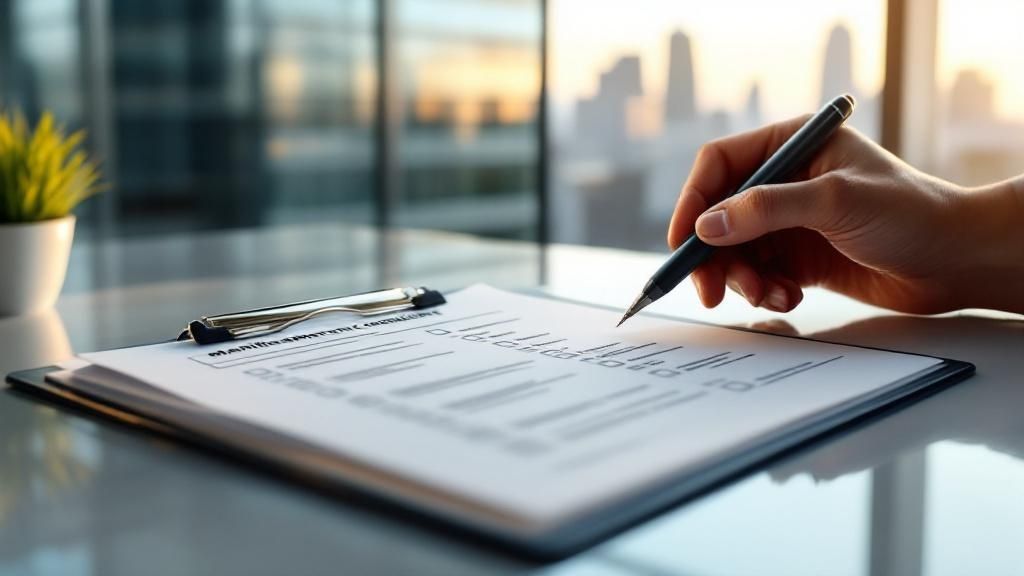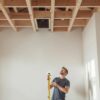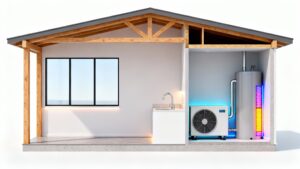Owning or managing a commercial building in the Bay Area is a big investment. This includes busy centers in Oakland and tall high-rises in San Francisco. Good maintenance is more than just fixing things when they break. It's a smart plan to protect your building's value, keep it safe, and control costs. A commercial building maintenance checklist is the best tool for this plan. It helps you schedule tasks instead of waiting for expensive, surprise repairs.
Following a good maintenance plan can lower your total costs. The Building Owners and Managers Association (BOMA) says that preventive maintenance can cut costs by 12% to 18%. This guide offers a detailed checklist made for buildings in the Bay Area. It will help builders and property managers protect their investments.
In the sections below, we will cover the key tasks for your building's most important systems. This includes HVAC, fire safety, electrical, and plumbing. We will give you a clear roadmap for keeping your property in top shape all year.
1. HVAC System Inspection and Maintenance
The heating, ventilation, and air conditioning (HVAC) system is the heart of any commercial building. A well-kept HVAC system gives you good air quality, saves energy, and keeps everyone comfortable. If you ignore it, you could face expensive repairs and high energy bills.
Good HVAC care involves checking all its parts on a regular schedule. This includes filters, ducts, and controls. The goal is to find small problems before they become big ones. To learn more about how HVAC systems improve a building's health, you can learn more about designing for air quality.
Why Prioritize HVAC Maintenance?
Regular HVAC service is a smart investment. It helps your equipment last longer, so you don't have to replace it as soon.
A clean, efficient system also saves you money. The U.S. Department of Energy states that proper HVAC maintenance can lower a building's energy use by 5% to 40%. This means big savings on your utility bills.
Actionable Maintenance Tips
Here are some tips for a good HVAC maintenance plan:
- Schedule During Off-Peak Hours: Do maintenance work in the evening or on weekends. This way, you won't disturb the people working in the building.
- Use Smart Sensors: Install modern sensors to watch how your system is working. They can warn you about problems before they cause a breakdown.
- Keep Detailed Logs: Write down every inspection, repair, and part replacement. This history helps you track the health of your equipment.
- Train On-Site Staff: Teach your staff to spot warning signs like strange noises or smells. They can help catch problems early.
- Plan for Seasons: Check your heating system in the fall and your cooling system in the spring. This makes sure you are ready for the changing weather in the Bay Area.
2. Fire Safety System Testing and Inspection
The most important job in any commercial building is keeping people safe. A working fire safety system is your first defense in an emergency. This part of your commercial building maintenance checklist includes testing alarms, sprinklers, and emergency lights.
Fire safety checks are required by law. These rules come from groups like the National Fire Protection Association (NFPA). Professionals must inspect smoke detectors, pull stations, and fire pumps. This keeps your building legal and, most importantly, saves lives.
Why Prioritize Fire Safety Maintenance?
Regular fire safety inspections are your duty as a building owner or manager. If you skip them, you could face large fines or have insurance claims denied.
These systems are complex and can fail over time. Dust can block smoke detectors, and backup batteries can die. Regular testing finds and fixes these issues before an emergency happens.
Actionable Maintenance Tips
Follow these steps for a strong fire safety plan:
- Work with Local Authorities: Let your local fire department know when you plan to test your alarms. This helps avoid false alarms and makes inspections go smoothly.
- Test During Quiet Times: Run loud alarm tests when the building is less crowded, like on weekends.
- Keep Good Records: Log every inspection, test, and repair. This paperwork is very important for legal and insurance reasons.
- Train Staff on What to Do: Make sure your team knows how to handle an emergency. They should know evacuation plans and how to use safety equipment.
3. Electrical System Safety Inspection
A building's electrical system powers everything from computers to safety equipment. A safe electrical system prevents fires and keeps the power on for everyone. Ignoring it is a major risk, so it must be on your commercial building maintenance checklist.
A full electrical inspection checks all the main parts. This includes panels, breakers, wiring, and backup generators. A professional will look for overloaded circuits or old parts before they cause a problem. For a wider view on safety, you can review a detailed construction safety checklist.
Why Prioritize Electrical System Inspections?
Regular electrical checks protect your building and the valuable equipment inside it. These inspections help your electrical system last longer and handle its power load safely.
A well-working system also helps your budget. Fixing electrical issues can lower your energy use and reduce utility bills. It also helps you avoid the high cost of emergency repairs and power outages.
Actionable Maintenance Tips
Use these tips for your electrical maintenance plan:
- Schedule Work During Downtime: Plan major inspections for times when the building is closed. This avoids disrupting your tenants.
- Use Thermal Imaging: This technology scans your electrical panels for "hot spots." It finds hidden problems like loose connections before they fail.
- Check Surge Protectors: Test your surge protection systems often. They are a cheap way to protect expensive electronics from power spikes.
- Document All Changes: Keep a record of all electrical work done in the building. This makes future repairs or upgrades much easier.
4. Plumbing and Water System Maintenance
A building's plumbing provides water for sanitation and daily tasks. Regular maintenance of pipes, drains, and water heaters prevents leaks and backups. If you neglect these systems, you risk water damage, mold, and health code violations.
Good plumbing care is more than fixing a leaky faucet. It includes checking pipes for rust, cleaning drains, and servicing water heaters. This approach finds weak spots before they cause an emergency. Thinking ahead is key, just as it is in a big project. A home renovation checklist can offer good ideas for managing complex system updates.
Why Prioritize Plumbing Maintenance?
Taking care of your plumbing protects your property's value. A single big leak can cause thousands of dollars in damage. Preventive maintenance also helps your plumbing parts last longer.
An efficient water system also lowers your bills. Small, hidden leaks can waste thousands of gallons of water. Finding and fixing them can save a lot of money and supports Bay Area sustainability goals.
Actionable Maintenance Tips
Use these tips for an effective plumbing plan:
- Install Smart Water Meters: These devices track your water use. They can spot unusual patterns that might point to a hidden leak.
- Schedule Regular Drain Cleaning: Have drains cleaned professionally, especially in busy areas like kitchens and restrooms. This prevents clogs and backups.
- Upgrade to Water-Efficient Fixtures: Low-flow toilets and faucets save water and can lower your utility costs over time.
- Keep Updated Plumbing Maps: Have a clear map of your building's pipes and shut-off valves. This is extremely helpful during an emergency.
- Plan Work for Off-Hours: Schedule major plumbing repairs for evenings or weekends to avoid bothering tenants.
5. Roof and Building Envelope Inspection
The building envelope includes the roof, walls, windows, and doors. It is your property's main shield against rain, wind, and the classic Bay Area fog. A strong envelope prevents water from getting in, which can cause serious damage and mold.
A full inspection looks at all the layers that protect your building. This means checking roofing materials, seals around windows, and flashing. The goal is to fix cracks or gaps before they let moisture inside. This focus on defense is similar to what a good construction quality assurance checklist provides.
Why Prioritize Roof and Envelope Maintenance?
Regularly checking the building envelope is a key investment. It protects the building's structure and improves energy efficiency by stopping air leaks. A well-sealed building means your HVAC system doesn't have to work as hard, which lowers your energy bills.
Good maintenance can also make your roof last years longer. This helps you delay the major cost of a full replacement.
Actionable Maintenance Tips
Use these tips for your roof and envelope maintenance plan:
- Inspect After Storms: Always check the roof and exterior after heavy rain or strong winds. Look for any new damage.
- Take Photos: Document the roof's condition with photos during each inspection. This creates a visual record to track changes over time.
- Clear Drains and Gutters: Regularly clean out leaves and debris from roof drains and gutters. This prevents water from pooling and causing damage.
- Use Infrared Scans: Consider hiring a pro to do an infrared scan. This can find hidden moisture inside your roofing system that you can't see.
- Schedule Work in Good Weather: Plan repairs for dry, mild days. This keeps crews safe and helps sealants and other materials work correctly.
6. Elevator and Vertical Transportation Maintenance
In any multi-story building, elevators are essential for moving people. Safe and reliable elevators are a must for tenant satisfaction and safety. Ignoring them can lead to dangerous failures and big liability risks.
Good elevator care involves checking all mechanical parts, safety systems, and controls. This work must be done by certified technicians to meet safety codes. It also prevents breakdowns that can frustrate people in the building. To learn more, it's helpful to explore expert installation and maintenance services.
Why Prioritize Elevator Maintenance?
Regular elevator service is an investment in safety and accessibility. It helps the equipment last longer and puts off the need for a very expensive replacement.
A well-kept elevator system also boosts the building's reputation. Frequent breakdowns can drive tenants away. Smooth, reliable service helps create a professional environment, which is important in competitive markets like Oakland and San Francisco.
Actionable Maintenance Tips
Use these tips for your vertical transportation systems:
- Schedule During Off-Peak Hours: Perform maintenance in the early morning, evening, or on weekends. This causes the least disruption.
- Plan for Modernization: If your elevator is over 20 years old, start planning for an upgrade. This helps you budget for the cost and avoid a crisis later on.
- Keep Spare Parts On-Site: Have common parts like buttons and rollers available. This makes small repairs much faster.
- Train Building Staff: Teach your on-site team to notice warning signs like odd noises or jerky movements. They can report problems right away.
7. Security System and Access Control Maintenance
A building's security system protects it from theft and other threats. A good system keeps people, property, and data safe. Neglecting it can leave your building open to risk, so it's a key part of any commercial building maintenance checklist.
Good security care means testing all your equipment regularly. This includes cameras, access card readers, and alarms. You need to check that cameras are working, door locks are secure, and software is updated. For more ideas, you can explore the best ways to improve security in your building.
Why Prioritize Security System Maintenance?
Regularly checking your security system is a smart way to manage risk. It makes sure the system works when you need it most. It also helps expensive hardware like cameras last longer.
A working system also discourages crime. If something does happen, you will have clear video footage and access logs. This information is vital for police reports and insurance claims.
Actionable Maintenance Tips
Use these tips for an effective security plan:
- Update Access Lists: When an employee leaves, remove their access right away. Check all user permissions every few months.
- Test Backup Power: At least twice a year, test that your security system works during a power outage. This ensures cameras and locks stay on.
- Protect Against Cyber Threats: Your security system is on a network, so it needs protection. Use strong passwords and keep software updated to prevent hacking.
- Train Staff on Procedures: Make sure your staff knows how to use the system. They should know how to respond to alarms and pull video footage.
Frequently Asked Questions (FAQs)
How often should I update my commercial building maintenance checklist?
You should review and update your checklist at least once a year. Also, update it after any major system upgrades or changes to your building. This keeps it relevant to your property's specific needs.
What is the most critical system to maintain in a commercial building?
While all systems are important, fire safety is the most critical. A failure in this system can have the most severe consequences for life and safety. HVAC and electrical systems follow closely behind due to their impact on daily operations.
Can preventative maintenance really save my Bay Area business money?
Yes, absolutely. According to the U.S. Department of Energy, proper maintenance can reduce energy costs by 5-40%. It also helps you avoid expensive emergency repairs, which cost much more than planned upkeep.
How do I find qualified contractors in the Berkeley or Oakland area?
Look for licensed and insured professionals with strong local references. Ask for proof of experience with commercial properties similar to yours. A trusted local supplier like Truitt & White can often provide recommendations for skilled builders and contractors.
What role do building materials play in maintenance?
High-quality building materials make a huge difference. Using durable roofing, energy-efficient windows from brands like Marvin, and reliable sealants reduces the frequency and cost of repairs. Quality materials extend the life of your building's systems and lower long-term maintenance needs.
This guide covered the key systems that keep your commercial property running well. From HVAC to security, each part is vital for safety, efficiency, and tenant happiness. A good commercial building maintenance checklist is more than a list of chores. It is a smart plan for managing your asset.
By following this checklist, you shift from fixing problems to preventing them. Regular inspections save you from costly water damage, conserve energy, and keep your property safe. This builds a reputation for quality that helps you attract and keep good tenants.
For every repair and renovation on your commercial building maintenance checklist, the quality of your materials is key. From durable roofing to energy-efficient windows and doors, Truitt and White has been the Bay Area's trusted partner for generations.
Visit our Berkeley showroom for expert advice and to see our wide selection of building materials. You can also learn more at Truitt and White to find what you need to protect your property's value.









